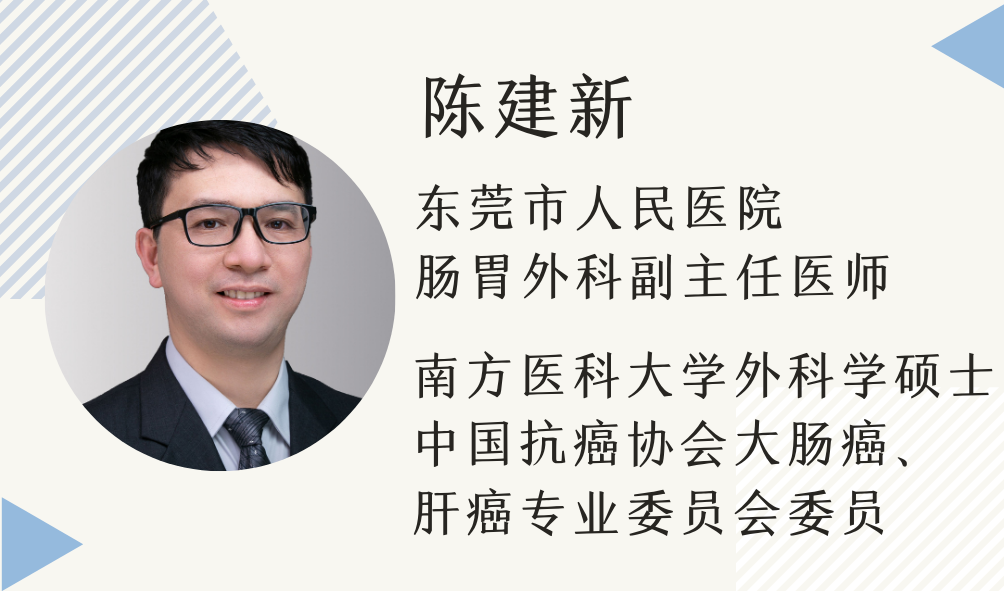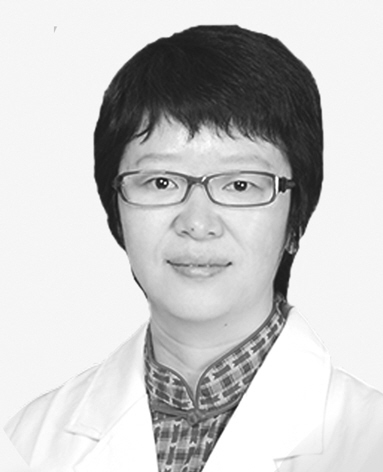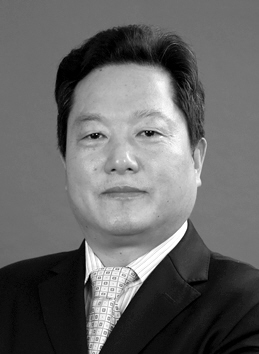注射的滥用、危险与安全措施
WHO的安全注射定义是:应用灭菌的注射器具和适当的操作进行注射,并对使用过的注射器具作安全的处理。在农村,由于注射器具不足,缺乏良好消毒设备,少数地区甚至连能源也受限制,严格实施消毒更为困难。在处理用过的注射器(包括抽血用的)时,操作人员忽视安全,有时任意丢弃,洗涤污水随地倾倒。有些地方设备条件良好,少数医护人员也不遵守安全规程。因此,必须采取措施促进注射的安全。
一、严格掌握注射的适应症,提高安全注射意识
首先,教育医护人员认识滥用注射的危险,尽量减少非必需的注射。原则上注射只用于药物口服无效者,病人有呕吐、进食困难或意识障碍者,以及因急症或病情需要者;静脉注射尽可能减少,限于必需的病人。乡村卫生室和基层诊所能够处理的病人中,必须采用注射的实在不会很多。在许多国家,注射器和药物一样不能自由买卖;美国的联邦法律虽然没有制定注射器和针头必须处方购买的条款,但州的法律则可规定有此限制。
医护人员必须树立安全注射的意识,严格遵守操作规程。安全注射规程不仅对病人负责,同时也有利于保护医护人员,避免污染环境。发达国家要求医疗机构必须对注射(特别是静脉注射)感染进行有效的监测;医务人员在注射前须洗手并带手套,而且还有预防医护人员意外刺伤的规定措施。
医护人员受针头刺伤颇为常见。美国的440万医务人员中,受针头或其他锐器刺伤的估计每年约80万人,其中受HIV污染器具刺伤者约1600人,HBV和HCV污染刺伤的更多。36,37 在巴基斯坦进行的免疫接种现场试验中,医务人员受针头刺伤的发生率约为2.1/1000。38 污染针头或锐器刺伤引起的感染率:HIV的一般约0.3%;39 HBV取决于宿主的免疫状态,无免疫力者可高达30%;7,40 HCV为1.2-10%左右。41 Lanphear等报告,50名受到HCV血污染针头刺伤的医务人员,抗体阳转率为6%。42 意大利一所医院的2347名医务人员,在1年的观察期间,108人遭针头刺伤,其中3人发生急性丙型肝炎,2名外科医生数月后发展成慢性活动性肝炎。43
二、注射器具必须严格消毒灭菌,废弃的必须适当处理
注射必须坚持“一人一针一管,一用一灭菌”。可再用的注射器必须经过清洗和高压蒸汽灭菌后再用,缺乏条件者必须保证充分煮沸消毒。
WHO建议,废弃的注射器具必须放入特制的纸箱内,送焚化炉销毁。7 在经济发达地区已常规采用这种处置方式,但大多数发展中国家很难办到。在我国,一次性注射器被再次利用的现象相当普遍,因此用过后应作毁损处理。这是美国防止非法滥用注射所采取的措施之一。
三、 建立供应注射器具、消毒和处理设备的支持系统
各级医疗卫生机构要备足日常所需的注射器具、消毒和处理废弃物的设备,并有供应和维修单位的支持,保障设备状态良好。基层单位由于经费困难或认识不足,注射器具周转紧张,高压蒸汽设备短缺。
四、 加强领导和监督
卫生行政部门应该制定政策和措施,减少注射滥用,保证注射安全。定期对医务人员进行安全注射教育,检查实施情况和设备状态;把安全注射列为晋升考核和医院评比的基本内容。许多国家的医事法规定具备一定学历和资格的医务人员才能进行注射,值得借鉴。
对注射器具的生产和销售进行质量监督,杜绝不合格产品进入医院。惩治收售废弃的一次性注射器再用的非法行为。
WHO 和UNICEF(1994)的调查表明:发展中国家的儿童每年免疫接种超过5亿次,其中不安全注射在30%以上。“现场的注射器具供应不足,消毒措施马虎是严重的问题;令人不安的是这种情况竟然普遍地被卫生管理部门所容忍。免疫接种存在危险是不能接受的。”7,8 我国农村幅员辽阔、人口众多,现场条件简陋,注射器具经常不足,接种人员文化技术较低,对象又主要是年幼儿童,因此保证接种安全显得特别重要而又艰巨。
1986年以来,WHO 与 UNICEF一再强调安全注射的全球政策,要求每次免疫接种必须使用灭菌的注射器具。1994年在科特迪瓦的亚穆苏克罗(Yamoussoukro)举行免疫接种工作会议,发表安全注射宣言。51个国家的与会者宣誓:“我们,免疫接种的管理者和工作者,决心做到每一次注射都是安全的;我们,受接种者,决心要求每一次接受的注射都是安全的。” 8,43 目标是在1997年底达到95%以上的免疫接种是安全的。44(在WHO 与 UNICEF签署的联合声明中目标定为2000年。8 )
为了达到上述目标,各国可分3个阶段工作:首先,评价当前的接种政策,调查不安全注射的严重程度及其原因。其次,制定计划并采取措施促进注射安全。最后,通过现场调查评价措施的效果。工作重点是掌握情况、资讯交流、加强监督、人员培训和设备供应,其中以接种人员的安全注射意识与承诺最为重要。在计划免疫工作中,要把足够的注射器具、消毒和处理设备的供应看成和疫苗供应同等重要。“如果不能保证注射器具的消毒,宁可不进行接种。”8
建立免疫接种异常反应的报告和调查系统,发现不安全的操作时,应采取行动,对医务人员重新培训,改用一次性或自毁型注射器和针头,改进消毒和弃置用具的处理。
加压注射器虽然价格较贵、携带不便,但用于免疫接种有很多优点,接种效果与有针注射相同,应急接种尤其适宜,所以被许多国家采用。近年WHO报告,将有一种价格适中的低负荷手持型加压注射器问世,可供发展中国家基层使用。7 由于可能传播血源性感染,丙酮或酒精不能灭活病毒,所以在发现喷头有血污染时需取下高压蒸汽消毒。大量观察表明,不同人群的加压注射后皮肤出血率存在差别,如巴西的亚马逊土著接种后出血率较新兵高6倍。因此,接种后传播感染的危险性,取决于人群的皮肤出血率和病毒感染率,在HBV和HIV感染率很低的地区应用比较安全。45
脊髓灰质炎疫苗最好不要与百白破混合疫苗同时进行接种。
参考文献
1. Wyatt HV. The popularity of injections in the Third World: origins and consequences for poliomyelitis. Soc Sci
Med 1984; 19:911-5.
2. Wyatt HV, Mahadevan S. Unnecessary injections in developing countries:the risk and costs. Int J Risk Safety
Med 1993; 4:167-76.
3. Cunningham CE.Thai "injection doctors". Soc Sci Med 1970; 4:1-24.
4. Reeler AV. Injections:A fatal attraction? Soc Sci Med 1990; 31:1119-25.
5. Sciortino R. Care-takers of Cure--A Study of Health Centre Nurses in Rural Central Java. Amsterdam:
Jolly, 1992:152-3.
6. Wyatt HV. Mothers, injections and poliomyelitis. Soc Sci Med 1992; 35:795-8.
7. Hill T, Lee JW. WHO/UNICEF Joint Statement on the Safety of Injections. Geneva, October 1994.
8. WHO:EPI Update No.27, 1994-9410283. WHO, Geneva, January 1995.
9. 陈志潜. 公医与公医教育 独立评论 1935 (138): 5-11
10. 祖述宪,李晋汾,唐根富. 安徽农村“低钾病”的流行病学研究. 安徽医大学报 1991; 26:97-9.
11. 祖述宪,李晋汾,唐根富. “低钾病”治疗的临床试验. 安徽医大学报 1991; 26:140-1.
12. 黄士雄. 安徽省低血钾症流行病学分析报告. 卫生防疫(低血钾专号),安徽省卫生防疫站. 1987;
(1):8-15.
13. Schmitt BD. Fever phobia:Misconceptions of parents about fevers. Am J Dis Child 1980;134:176-81.
14. Winter JC: Routes of administration. in Textbook of Pharmacology. Smith CM & Reynard AM(eds),
Philadelphia:WB Saunders Co, 1992:34-6.
15. Anonyms. EPI. Changing needles but not syringe: an unsafe practice. WHO Weekly Epid Rec. 1987, Nov. 13.
16. Mortimer PP. Arsphenamine jaundice and the recognition of instrument-borne virus infection. Genitourin Med
1995;71:109-19.
17. Aylward B, Kane M, McNair-Scott R et al. Risk of human immunodeficiency virus and hepatitis B virus
transmission through unsafe injections. WHO/EPI, Geneva, August 1994.
18. Grabowsky M, Hadler S, Chen B, et al. Risk of human immunodefiency virus or hepatitis-B virus transmission
through jet injectors or needles and syringes. WHO/EPI, Geneva, August 1994.
19. Abb J, Deinhardt F, Eisenburg J. The risk of transmission of hepatitis B virus using jet injection in inoculation.
J Infect Dis 1981;144:179.
20. Brink PRG, van Loon AM, Trommelen JCM, et al. Virus transmission by subcutaneous jet injection. J Med
Virol 1985; 20:393-7.
21. Hepatitis B associated with jet gun injection----Califonia. Morb Mort Wkly Rep 1986;35:373-6.
22. Canter J, Mackey K, Good LS, et al. An outbreak of hepatitis B associated with jet infections in a weight
reduction clinic. Arch Intern Med 1990;150:1923-7.
23. 祖述宪.未发表资料,1978.
24. Colligon PJ. Intravascular cather associated sepsis: a common problem. The Australian study on intravascular
cather associated sepsis. Med J Aust 1994; 161:374-8.
25. 张锡庆,王科文. 注射性下肢功能障碍43例观察.中华小儿外科杂志.1989; 10:284-5.
26. 彭明惺,周素华,周锡华,等.四川地区儿童臀肌挛缩症调查报告.中华小儿外科杂志.1989; 10:356-8.
27. 陈瑾瑛. 臀肌挛缩症病因探讨:附86例分析. 临床儿科杂志 1994;12:331-2.
28. 胡锦谱. 合谷穴位药物注射造成手部畸形. 中华儿科杂志 1980;18:225-7.
29. 程绪西,王澍寰. 合谷穴针刺或药物注射引起的手内小肌肉挛缩. 中华外科杂志 1962;10:425-6.
30. 谢基立. 穴位注射疗法宜慎用. 健康报 1997年6月4日.
32. Knowelden J. Provocation poliomyelitis. In: Proceeding of A Symposium on Immunization in Childhood, 1959.
Edinburgh & London:E & S Livingstone Ltd, 1960:11-7, 23-7.
32. Guyer B, Bisong AAE, Gould J et al.Injections and paralytic poliomyelitis in tropical Africa. Bull WHO 1980;
58:285-91.
33. Wyatt HV, Mahadevan S and Srinivasan S. Unnecessary injections and paralytic poliomyelitis in India. Tran
Roy Soc Trop Med Hyg 1992; 86:546-9.
34. Sutter RW, Patriarea PA, Suleiman AJM et al. Attributable risk of DTP injection in provoking paralytic
poliomyelitis during a large outbreak in Oman. J Infect Dis 1992; 165:444-9.
35. Strebel PM, Ion-Nedelcu N, Baughman AL et al. Intramuscular injections within 30 days of immunization with
oral poliovirus vaccine --- a risk factor for vaccine-associated paralytic poliomyelitis. N Engl J Med 1995; 332:
500-5.
36. Tereskerz PM, Pearson RD & Jagger J. Occupational exposure to blood among medical students. N Engl J
Med 1996; 335:1150-3.
37. Jagger J, Pearson RD. Universal precautions:still missing the point on needlesticks. Infect Control Hosp
Epidemiol 1991; 12:312-3.
38. Steinglass RS, Boyd D, Grabowsky M et al. Safety, effectiveness and ease of use of a non-reusable syringe in a
developing country immunization program. Bull WHO 1995; 73:57-63.
39. Case-control study of HIV seroconversion in health-care workers after percutaneous exposure to HIV-infected
blood --- France,United Kingdom,and United States, January 1988-August 1994. Morb Mortal Wkly Rep
1995;44:929-33.
40. Recommdations for preventing transmission of human immunodefiency virus and hepatitis B virus to patients
during exposure-prone invasive procedures.Morb Mortal Wkly Rep 1991;40(RR-8):1-9.
41. Tereskerz PM, Petrosillo N, Puro V, et al. Hepatitis C virus in health care workers. Adv Exposure Prev
1995;2:1, 7-9.
42. Lanphear BP, Linnemann CC, Cannon CG, et al. Hepatitis C virus infection among in healthcare workers:risk
of exposure and infection. Infect Control Hosp Epidemiol 1994;15:745-50.
43. Marranconi F, Mecenero V, Pellizzer GP, et al. HCV infection after accidental needlestick injury in health-care
workers.
44. Yamoussoukro Declaration on the Safety of Injections.WHO, Geneva, 1994.
45. Brito GS, Chen RT, Stefano IC, et al. the risk of trasmission of HIV and other blood-borne diseases via jet
injectors during mass campaigns in Brazil. Int Conf AIDS 1994; 10(1):301.
附注:本文初稿写成于1996年4月,此后至12月底,读到《健康报》刊登下列注射事故和问题的报道。不过这些事例还只是“冰山一角”。
(1) 4月16日: 陕西眉县一医院护士误将消毒用的酒精当作葡萄糖液给病人静脉滴注,当家长报告病人出现口唇紫绀、抽搦和神志改变时,医护人员仍然毫无觉察。
(2) 7月20日:湖南一些地区使用劣质的一次性注射器造成很多人发生严重深部脓肿。
(3) 7月31日:陕西对西安市医疗用品市场上的一次性输液器进行抽查,35%的质量不合格。
(4) 8月 6日:福建莆田市一医院给病人滴注的液体内有絮状物,培养发现大量细菌和霉菌污染。
(5) 11月12日:湖南祁阳县一镇防保站的卫生人员“误将卡介苗同乙脑和麻疹疫苗一起接种”,导致68名幼小儿童发生严重反应,其中31人做了手术治疗。
(6) 11月13日:四川珙县一乡村医生的注射污染,造成87人感染孢子丝菌病。
(7) 11月19日:浙江富阳市:基层医疗机构滥输液严重,特别是农村卫生室。小伤小病输液成为习惯,主要是为了“抓创收”。对2镇1乡的32个村卫生室的调查发现,这些卫生室都开展静脉输液,其中2/3不具备条件。“输液不当引起医疗纠纷的事件时有发生”。
(8) 11月26日:山东平度市农村的医务人员误将卡介苗当作麻疹疫苗超量深部注射,引起数名小学生严重反应,发热、深部脓肿和溃疡。
(9) 11月26日:贵州桐梓县一镇卫生院的医生,将1支人血丙种球蛋白打开分2次注射,第2天晚上(距第1次注射30小时以上)幼儿接受剩余的一半注射后半小时,发生过敏性休克死亡。
(10) 12月18日:江西进贤县一中医主治医师从医院大量收集废弃的一次性注射器,“用水洗洗,重新包装向基层医疗单位和防疫站推销”,单出售给湖南常德市的就达7万支。常德市由于应用了废弃的一次性注射器,造成许多病人发生(非结核性分枝杆菌)深部脓肿。*此外,一火车站发现从西安发出的一次性注射器货箱中竟然“流出臭水”;北京房山县一医院在上门推销的一次性注射器中发现“带有血迹”。
(11) 12月31日:山西太原制药厂生产的氨苄青霉素含有大量热原,导致武汉一门诊部的42名输液儿童发生严重反应:高热、抽搦和休克。
后记:本文 1996年4月完成,曾被有些报纸摘要刊登,后发表于《中国农村卫生管理杂志》1997;17(3): 31-5;1997年8月修改补充。
补记:青霉素钾盐肌肉注射刺激性疼痛较严重,因此曾采用苯甲醇作溶剂,以减轻疼痛。80年代以来,我国已普遍使用青霉素钠盐,目前乡镇卫生院以上的医疗机构已不再使用苯甲醇,但是,有些地方的乡村医生为了显示“打针不疼医术高”,仍然采用苯甲醇注射。健康报2000年6月24日报道:陕西省兴平县一个村子至今仍有发生,近年调查,自1991年以来共发生50多例与苯甲醇注射有关的儿童臀肌挛缩症,年龄在3-17岁。
*据《文汇报》2001年4月4日以“烂臀有治了——XXX攻克一医学世界难题”为题报道:1998年4月至1999年4月全国多个发生一批批因注射导致的非结核性分枝杆菌引起的“烂臀病”, 常德市第一人民医院外科主任XXX的“非结核性分枝杆菌感染的外科治疗”,“拿出了一套治疗该病较为成熟的方案”,“攻克一度困扰世界医学界的重大难题”,“已被国家科技部正式确定为‘2001年国家科技成果推广计划’项目之一,位居全国荣登该计划金榜的6 项临床医学成果之首”。据称“该成果是全球临床医学科学领域的一大突破。”这个报道一方面说明注射造成感染的普遍严重程度,另一方面这篇报道对“成果”的炒做似乎也太离谱,臀部注射感染的 “外科治疗”,很难说算什么“攻克医学世界难题”。XXX文尚武
2003年8月30日中央电视台《今日说法》的案例:江苏省东海县青湖镇青年妇女时翠梅患感冒,步行去当地卫生院就诊,医生给予糖水内加丁胺卡那霉素输液,引起病人突然死亡。尸检诊断为过敏性休克。东海县法院判决卫生院赔偿家属2. 9万元。卫生院乃至该县医务人员都对此判决表示不满,认为糖水内加丁胺卡那霉素输液是广泛应用的治疗感冒措施,丁胺卡那霉素引起过敏性休克的发生率极低,临床上并不要求进行过敏试验,患者死亡属不可预料的事件。卫生院上诉失败。
作者通讯地址: 合肥 230032 安徽医科大学 25 信箱 临床流行病学研究室
Abuse of injections has quickly spread from rural clinics to city hospital since late 1970s, as China began to carry out economic reform. Sharply increased abuse of injections reaches to an alarming extent in the whole country. A survey of the use of injections was conducted in four city hospital of Anhui Province in the July of 1994.Among 4341 prescriptions of the outpatient, 64 per cent had injections,including 59% intramuscularly, 17% intravenously, 16% subcutaneously and 8% multiply to be administered for antibiotics, antipyretics, glucose , vitamines and corticosteroid. Abuse of infusion of glucose or glucose-saline has been so common that patient with cold or even people tired always asks for infusions of fluids. If a doctor, who is coservative in his/her attitute to the inappropriate medication, refuses to the patient’ request, the patient may turn to another doctor for infusion. Laymen, even doctors think that infusions of fluids may be helpful in bringing down a fever, detoxication or nourishing. The lower the educational level of the patients or parents, the stronger their preference to injections. As injection or infusion bot only a symbol of western modern medicine, buy also a mean for doctors and healers to make a profit and to please patient. In the April of 1991, a group of medical professors from the Havard Medical School visited a town hospital in Anhui Province. To their great surprise was that almost every patients, they saw in the wards, were receiving infusion.. However, their illness was in not at all serious, Ironically, an essay titled “To see doctor in the U.S.”published on the 《People Daily》, a most important official newspaper of China. The author of this essay is a visiting scholar studing at the University of Maryland School of Medicine. He complained that the American physicians refused his request to the injection of antipyretics and infusion, when he had “viral flu”with fever. This two stories reflex the culture conflict in their attitute to medications and injections between western and Chinese doctors. 2. Abuse of injections has quickly spread from rural clinics to city hospital since late 1970s, as China began to carry out economic reform. Sharply increased abuse of injections reaches to an alarming extent in the whole country. A survey of the use of injections was conducted in four city hospital of Anhui Province in the July of 1994.Among 4341 prescriptions of the outpatient, 64 per cent had injections,including 59% intramuscularly, 17% intravenously, 16% subcutaneously and 8% multiply to be administered for antibiotics, antipyretics, glucose , vitamines and corticosteroid. Abuse of infusion of glucose or glucose-saline has been so common that patient with cold or even people tired always asks for infusions of fluids. If a doctor, who is coservative in his/her attitute to the inappropriate medication, refuses to the patient’ request, the patient may turn to another doctor for infusion. Laymen, even doctors think that infusions of fluids may be helpful in bringing down a fever, detoxication or nourishing. The lower the educational level of the patients or parents, the stronger their preference to injections. As injection or infusion bot only a symbol of western modern medicine, buy also a mean for doctors and healers to make a profit and to please patient. In the April of 1991, a group of medical professors from the Havard Medical School visited a town hospital in Anhui Province. To their great surprise was that almost every patients, they saw in the wards, were receiving infusion.. However, their illness was in not at all serious, Ironically, an essay titled “To see doctor in the U.S.”published on the 《People Daily》, a most important official newspaper of China. The author of this essay is a visiting scholar studing at the University of Maryland School of Medicine. He complained that the American physicians refused his request to the injection of antipyretics and infusion, when he had “viral flu”with fever. This two stories reflex the culture conflict in their attitute to medications and injections between western and Chinese doctors.















